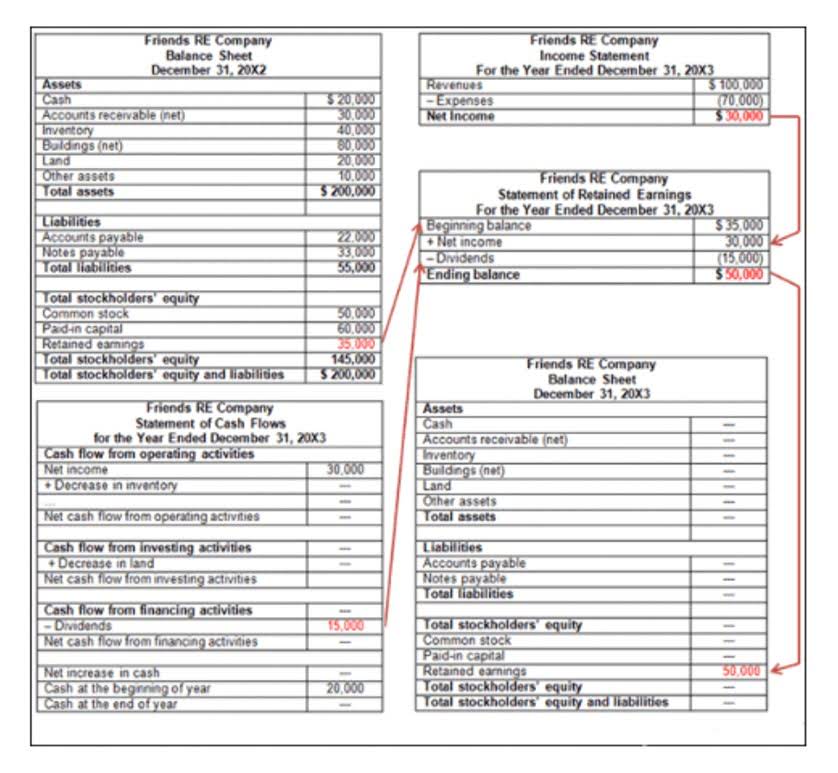
A key document for understanding the health of a business, the profit and loss statement accounting provides an overview of business activities at-a-glance. An accumulated deficit is when a company’s debts total more than its reported earnings on a balance sheet. The more liability a business assumes, the riskier it will be to investors, and the less likely it’ll be for you to borrow money and grow your business.
How do you calculate owner’s equity?
Revenue is the money generated by a company during a period but before operating expenses and overhead costs are deducted. In some industries, revenue is called gross sales because the gross figure is calculated before any deductions. All of the other options retain the earnings for use within the business, and such investments and funding activities constitute retained earnings.

Bank Accounts
Recording an initial inventory quantity is essentially the same as recording an opening balance in the inventory account and creates the problem discussed in the two earlier sections. However, that doesn’t immediately mean you committed a mistake in using QuickBooks—it’s opening balance equity vs retained earnings just how the system works. Here are the six reasons why you might have an Opening Balance Equity on your balance sheet. With plans starting at $15 a month, FreshBooks is well-suited for freelancers, solopreneurs, and small-business owners alike.

Investors can use retained earnings to gauge investment risk
- However, it might not happen, so you might need to invest some effort into searching for the cause of the discrepancy and fixing it.
- Making adjusting entries allows for the proper allocation of income and expenses, helping to accurately reflect the financial position.
- For example, if a business generated a $30,000 profit over 2 years and then lost $10,000 over the 2 years after, the balance sheet in the 4th year would show a retained earnings total of $20,000.
- When you enter beginning balances for initial transfers of asset and liability accounts in QuickBooks, the system automatically creates an entry to the Opening Balance Equity account to ensure that debits and credits are equal.
- Depending on the financial position of your business, you may want to reinvest in equipment, employee salaries, or more inventory.
- Since income statement accounts are closed at the end of every period, the journal entry will contain an entry to the Retained Earnings account.
- Accounts Receivable is the amount of money owed to a business by its customers.
For instance, if a company pays one share as a dividend for each share held by the investors, the price per share will reduce to half because the number of shares will essentially double. Because the company has not created any real value simply by announcing a stock dividend, the per-share market price is adjusted according to the proportion of the stock dividend. Retained earnings are the cumulative net earnings or profits of a company after accounting for dividend payments. As an important concept in accounting, the word “retained” captures the fact that because those earnings were not paid out to shareholders as dividends, they were instead retained by the company.

The final step of this journey is to create equity accounts and assign balances to them. Next, you might want to create your liability accounts and enter their initial (or opening, if you will) balances. You might want to automate your accounting to eliminate errors, have your transactions categorized correctly and funds allocated properly.

- So, we need to allocate it to the appropriate accounts in your chart of accounts.
- The formula to calculate retained earnings starts by adding the prior period’s balance to the current period’s net income minus dividends.
- Some of the restrictions reflect the laws of the state in which a company operates.
- Alternatively, the company paying large dividends that exceed the other figures can also lead to the retained earnings going negative.
- Further, the retained earnings could be spent on outstanding loans, mergers and acquisitions, or improving infrastructure.
- For example, if a fixed asset was entered as an expense, it can cause the opening balance equity account to be incorrect.
- When expressed as a percentage of total earnings, it is also called the retention ratio and is equal to (1 – the dividend payout ratio).
This is a good indicator as opening balance equity account should be temporary by design. Let MYOB improve your accounting operations, ensure compliance, and give you financial peace of mind while helping your business succeed. MYOB’s accounting software can help streamline bookkeeping, allowing you to focus on greater business opportunities. Holding liquid cash is wise, as investment opportunities may come up during the year.
Bringing an Opening Balance Equity Account to Zero
Retained earnings offer internally generated capital to finance projects, allowing for efficient value creation by profitable companies. However, note that the above calculation is indicative of the value created with respect to the use of retained earnings only, and it does not indicate the overall value created by the company. One way to assess how successful a company is in using retained money is to look at a key factor called retained earnings to market value. It is calculated over a period of time (usually a couple of years) and assesses the change in stock price against the net earnings retained by the company. He has a CPA license in the Philippines and a BS in Accountancy graduate at Silliman University. It can reinvest this money into the business for expansion, operating expenses, research and development, acquisitions, launching new products, and more.
Instead, set the account up with a zero opening balance and then input the transaction necessary to record the balance. For instance, if the account is a personal bank account being transferred to your business, create a journal entry to debit the new account and credit the equity account Paid-in Capital. Moving your existing books to QuickBooks without entering equity accounts will result in Opening Balance Equity because QuickBooks needs to balance debits and credits. This happens when you only import asset and liability accounts from your existing books to QuickBooks.
- These programs are designed to assist small businesses with creating financial statements, including retained earnings.
- It is used to provide an offset to the other accounts so that the books are always balanced.
- The retained earnings of a company are the total profits generated since inception, net of any dividend issuances to shareholders.
- To fix this issue, the bookkeeper should review the general ledger and make sure that all prior account balances are accurate.
Follow a Standard Chart of Accounts

This can happen if the company has more liabilities than assets at the beginning of its operations. In such cases, the negative value represents the money that needs to be invested in the business to balance out the financial records. This process is crucial for identifying and rectifying any discrepancies that may exist in the records, leading to a more transparent and reliable financial reporting. By reconciling accounts, businesses can also maintain a clear audit trail, ensuring compliance with accounting standards. When starting a new business, the Opening Balance Equity entry represents the initial investment made by the business owner(s) to establish the financial foundation of the business entity for the upcoming accounting period. On the other hand, Retained Earnings signify the cumulative net income generated by the company since its establishment, after dividends have been paid.


